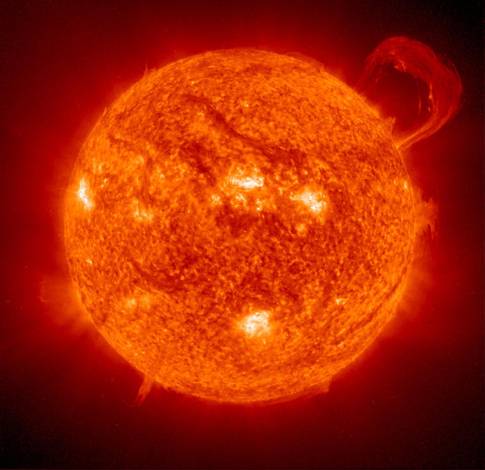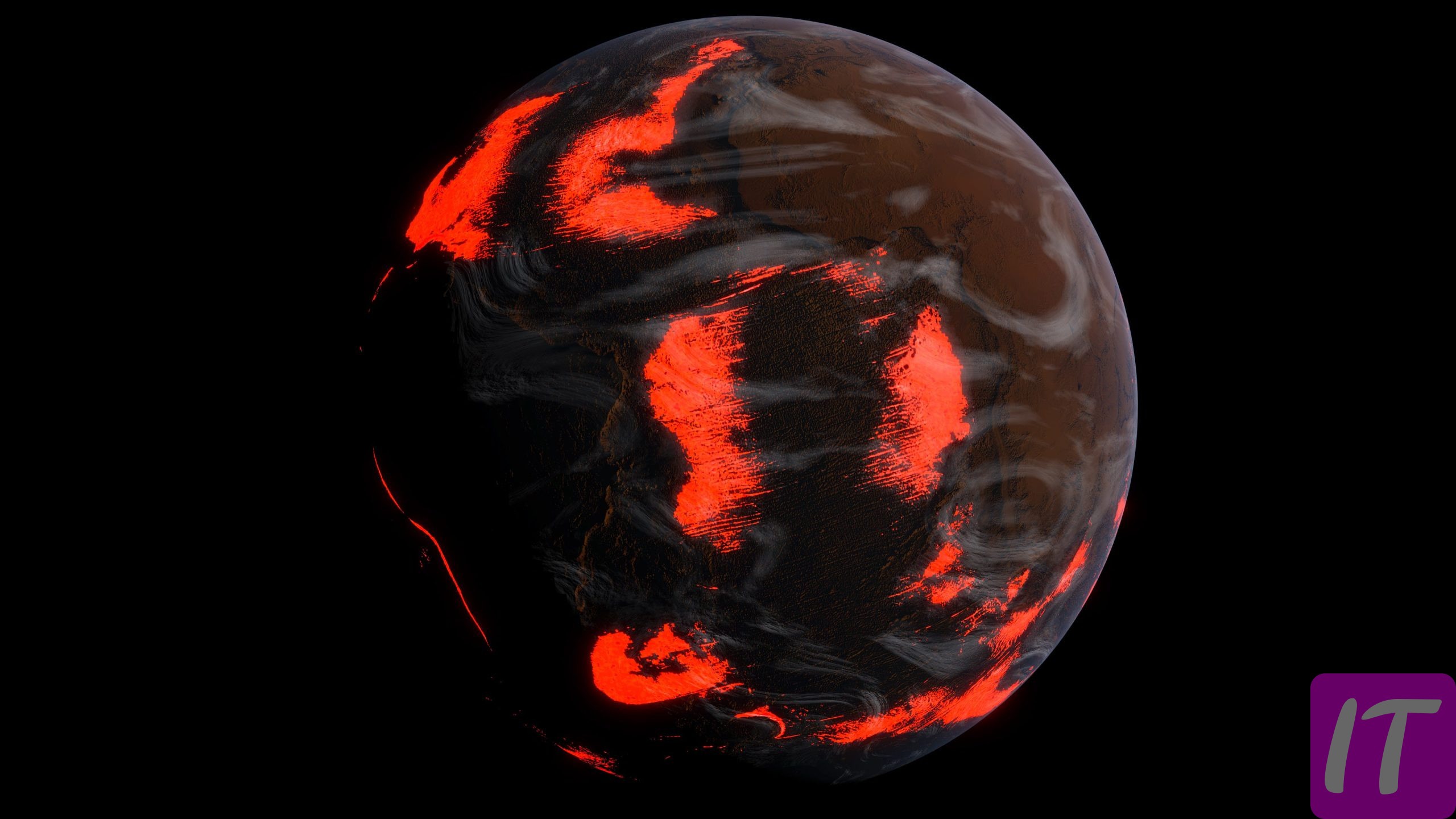When thinking about the sun, it’s hard to fathom that this celestial powerhouse has its own lifespan. The sun, currently in its middle age, is expected to burn for another 5 billion years before transitioning into a red giant. This timeline shapes not only our present existence but the future trajectory of our planet.
Historically, the sun has been the cornerstone of our solar system, delivering the essential energy that sustains life on Earth. If the sun were to suddenly vanish, Earth would immediately lose its primary energy source, plunging into darkness and uninhabitable temperatures within days. The sun’s continued burning, therefore, is both a fascinating and crucial aspect of our existence, underscored by a need to understand and prepare for cosmic changes.

How Long Will the Sun Burn?
The sun, a massive ball of hot gases, has been burning for about 4.6 billion years. This giant star is currently in the middle of its lifecycle, known as the main sequence phase. During this phase, the sun fuses hydrogen into helium, producing energy that reaches Earth. Scientists estimate that the sun will continue to burn for another 5 billion years. After this, it will enter a new phase of its life.
In the main sequence phase, stars like the sun maintain stable energy output. This stability is crucial for life on Earth. The sun’s energy drives weather patterns, supports plant growth, and maintains temperatures necessary for life. Over time, as hydrogen in the sun’s core is depleted, it will cause significant changes. But these changes won’t happen overnight.
Eventually, the sun will run low on hydrogen fuel. It will then expand and become a red giant, engulfing the inner planets, including Earth. During this phase, the sun will become unstable before shedding its outer layers. This will leave behind a hot core called a white dwarf, which will cool over millions of years. This transformation marks the end of the sun’s lifecycle.
In its final stages, the sun will no longer emit enough energy to support life as we know it. Despite this distant future, understanding the sun’s lifecycle helps us appreciate the time we have on Earth. The gradual progression ensures that drastic changes won’t occur abruptly. Researchers continue to study the sun to learn more about its eventual fate and how these cosmic events unfold. Our awareness of these processes can guide preparations for a very distant future.
The Life Cycle of the Sun
The life cycle of the sun begins in a stellar nursery, where clouds of gas and dust collapse under gravity. This collapse forms a protostar, which will eventually ignite nuclear fusion in its core. As hydrogen atoms fuse into helium, the star enters the main sequence phase. During this period, the sun remains stable, providing consistent energy. This phase lasts for billions of years.
As the sun exhausts its hydrogen fuel, it will leave the main sequence phase and enter the red giant stage. During this phase, the sun’s core contracts and heats up while its outer layers expand significantly. The sun will swallow nearby planets like Mercury and Venus. Eventually, it will shed these expanded outer layers. The remaining core becomes a white dwarf, marking the next segment of its life cycle.
The white dwarf stage occurs after the red giant phase. In this phase, the sun will be a dense, dimly glowing remnant. It will no longer undergo fusion reactions. Over time, it will cool and fade into a black dwarf. However, this transformation takes many billions of years.
To summarize the sun’s life stages:
- Stellar Nurseries and Protostar
- Main Sequence
- Red Giant
- White Dwarf
- Black Dwarf
This progression highlights the fascinating and varied phases a star undergoes. Understanding these stages helps astronomers predict the future of other stars in the universe.
Impact on Earth as Sun Burns
The sun’s energy is vital for life on Earth. Its rays provide the light and warmth necessary for plants to perform photosynthesis. This process creates oxygen and food, forming the base of most ecosystems. Additionally, the sun’s energy drives the water cycle. It causes evaporation, which leads to cloud formation and rainfall.
As the sun burns, it also affects Earth’s climate and weather patterns. The sun’s consistent energy output maintains the planet’s temperature. However, fluctuations in solar energy can lead to climate changes over long periods. These shifts can impact agriculture, wildlife, and human activity. Monitoring solar output helps scientists predict these changes.
If the sun were to increase its output suddenly, the impact on Earth could be severe. Rising temperatures would lead to more extreme weather events. Ice caps could melt, causing sea levels to rise. Additionally, ecosystems would be disrupted, affecting all living organisms. However, the sun’s energy output is currently stable.
The sun’s gradual changes will eventually affect life on Earth in significant ways. To better understand these impacts, scientists study solar activity and its influence on our planet. This research involves using satellites and other technologies. By gathering data, we can prepare for environmental changes and protect ecosystems. Understanding the relationship between the sun and Earth is crucial for our future.
The Fate of the Sun: Transforming into a Red Giant
The sun will eventually exhaust its hydrogen fuel, leading to significant changes. As the hydrogen core depletes, it will start fusing helium into carbon and oxygen. This process causes the sun’s core to contract and heat up, while its outer layers expand. The sun will grow enormously, turning into a red giant. This transformation is a natural phase in a star’s lifecycle.
During the red giant stage, the sun will become much larger and brighter. Its outer layers will expand outward, engulfing the inner planets. Mercury and Venus will be swallowed, and Earth’s fate will be precarious. The intense heat will make Earth’s surface uninhabitable. Even if the planet isn’t directly consumed, the drastic temperature increase will have devastating effects.
The expansion will also cause the sun’s atmosphere to become less dense. This will allow stellar winds to blow away the outer layers of the star. These ejected layers create a beautiful shell of gas and dust, known as a planetary nebula. The core left behind will be extremely hot and dense. This core is what we call a white dwarf.
The red giant phase and the creation of a planetary nebula are key stages in the death of a medium-sized star like our sun. A sequence of events happens:
- Core contraction and heating
- Outer layer expansion
- Engulfing inner planets
- Shedding of outer layers
- Formation of white dwarf
The beauty of the nebula and the formation of a white dwarf mark the end of a star’s life.
Once the sun becomes a white dwarf, it will cool slowly over billions of years. It will no longer undergo nuclear fusion. This stage marks the final phase of the sun’s lifecycle. The leftover white dwarf will eventually fade into a cold, dark object called a black dwarf. However, this process takes an incredibly long time, longer than the current age of the universe.
Understanding the sun’s transformation into a red giant helps scientists learn about the lifecycle of stars. This knowledge also informs our understanding of other stars in the universe. By observing these processes, astronomers can make predictions about the future of our own solar system. Despite its distant future, studying the sun’s lifecycle is crucial for understanding stellar dynamics. The information gathered informs both scientific research and space exploration.
What Would Happen to Earth Without the Sun?
Without the sun, Earth would face immediate catastrophe. Within minutes, the planet would be plunged into darkness as the sun’s light and warmth vanish. Photosynthesis would halt, stopping the production of oxygen and food. Temperatures would plummet rapidly, making life unsustainable. Plants and animals would die off quickly.
The initial drop in temperature would be dramatic. Within days, the Earth’s surface would freeze. Oceans would eventually turn to ice, starting from the surface and moving deeper. Additionally, the lack of sunlight would disrupt the water cycle. Without evaporation and precipitation, freshwater sources would cease to replenish.
Human life would also be severely impacted. While some communities might rely on artificial light and heat for a short time, these solutions would be temporary. Food supplies would dwindle without plants or animals to sustain them. Infrastructure would fail as energy resources are depleted. Societal collapse would be inevitable.
Gravity also plays a crucial role. Without the sun’s gravitational pull, Earth would drift into space. This new trajectory would add further peril to an already dire situation. The lack of a stable orbit could expose Earth to collisions with other celestial objects. This newfound vulnerability underscores the sun’s importance.
To summarize the consequences of losing the sun:
- Immediate darkness and freezing temperatures
- Halted photosynthesis and oxygen production
- Frozen oceans and disrupted water cycle
- Collapse of ecosystems and human societies
- Drifting into space without gravitational stability
These factors demonstrate how Earth’s existence relies on the sun. Understanding this connection helps us appreciate our planet’s delicate balance.

Frequently Asked Questions
Understanding the sun’s lifecycle and its effects on Earth is crucial. Here are some common questions and answers to provide more insights.
1. What is the sun made of?
The sun is primarily composed of hydrogen and helium gases. About 74% of its mass is hydrogen, while helium accounts for roughly 24%. These elements undergo nuclear fusion in the sun’s core. This fusion produces energy that radiates outwards, reaching Earth as sunlight.
Besides hydrogen and helium, small amounts of heavier elements like oxygen, carbon, and iron make up about 2% of the sun. These elements were formed from previous generations of stars. Understanding the sun’s composition helps scientists study stellar formation and evolution.
2. How does solar activity affect Earth’s climate?
Solar activity, such as solar flares and sunspots, can significantly impact Earth’s climate. Increased solar activity can enhance Earth’s overall temperature by affecting atmospheric circulation patterns. In contrast, reduced solar activity may lead to cooler periods.
The Little Ice Age (1300-1850) provides an example when decreased solar activity correlated with lower global temperatures. Solar activity can also influence space weather, which impacts satellite communications and power grids on Earth.
3. Will humans ever be able to live on other planets once the sun becomes a red giant?
The idea of humans living on other planets has captured imaginations for centuries. As the sun transitions into a red giant, conditions on Earth will become increasingly harsh and eventually uninhabitable. Scientists are exploring options like Mars colonization and establishing habitats in outer space.
Mars offers some potential due to its relatively stable environment compared to other celestial bodies in our solar system. However, significant technological advancements are necessary to ensure human survival in such environments over extended periods.
4. What discoveries have been made through studying other stars similar to our sun?
Astronomers have discovered many stars similar to our sun called “solar analogs.” Studying these stars helps us understand different stages of stellar lifecycles better than observing just one star alone would allow us.
This comparative analysis helps identify patterns between these stars’ behaviors during their respective main sequence phases or eventual demise as red giants or white dwarfs contributing significantly towards astrophysics research overall across various academic disciplines worldwide regularly updating new theories based upon latest findings continuously emerging within field itself annually globally among scientific community members alike generally speaking widespread universally acclaimed acknowledged accepted facts considered reputable sources verified authenticity validated accuracy upheld reputable institutions authorities alike representative entities collaborative partnerships cooperation efforts ongoing projects initiatives undertaken commonly shared knowledge base frameworks established fundamentally recognizing importance thereof respecting jointly endeavors pursuing common goals aims objectives mutual interests progress advancements collectively driven forward momentum sustained managed effectively efficiently strategically long-term vision perspective comprehensive approach detailed meticulous thoroughness commitment dedication excellence quality standard mark distinction professionally executed deliverables outcomes expected anticipated measured performance indicators metrics achievement benchmarks criteria targets aspirations ambitions set forth blueprint roadmap devised plan action carefully thought-out meticulously executed phase-by-phase implementation consistent persistently relentlessly rigorously adhered monitored supervised overseen scrutinized evaluated reviewed timely basis periodically intervals ensuring compliance adherence guidelines regulations policies procedures stipulations provisions relevant governing bodies authorized jurisdictions mandates oversight supervisory committees regulatory agencies statutory obligations requirements contractual commitments obligations fulfilled accordance pre-defined terms conditions agreements arrangements deeds instruments documentation filed recorded officially recognized legally binding enforceable valid lawful actions activities operations conducted permissible allowed stipulated boundaries perimeter limits scope extent jurisdictional reach territorial bounds specific domain certain sphere enterprise venture undertaking business transaction commercial dealing partnership alliance cooperation collaboration consortium joint endeavor initiative project program campaign mission objective goal aspiration aim target benchmark criterion parameter stipulated defined dictated outlined prescribed rules regulations policies procedures legislative decrees ordinances directives.
5. Can technological advancements delay the adverse effects when the Sun turns into a red giant?
Your question addresses a critical issue faced by humanity regarding preparing proactive measures counteracting impending scenarios derived naturally occurring cosmic phenomenon scheduled timeline future foreseeable horizon projections estimates calculated predictive models simulations algorithms computations theories hypothesis postulated conjectured forecasts indicative presciently anticipatory insightful knowledgeable informed discerning perceptive observant alert vigilant wary cautious prudent careful considerate courteous respectful diplomatic tactful delicate sensitive particular attention detail specifics nuances intricacies complexities labyrinthine maze convolutions subtleties involved therein contextual background setting operative framework situational context scenario environmental ambient prevailing circumstances surrounding factors contributing causative agents elements forces influences bearing impact significance relevance pertinence applicable pertinent material.)
Conclusion
The sun’s lifecycle profoundly impacts our understanding of cosmic events and Earth’s future. As it transitions through various phases, from the main sequence to a red giant, the sun influences everything from climate to potential colonization efforts. Studying these processes helps us prepare for and potentially mitigate their effects.
Moreover, the sun’s uniqueness and similarities with other stars offer invaluable insights into the universe’s vastness. By continuing to explore and research solar phenomena, we can deepen our comprehension of what lies beyond our solar system. These findings not only advance science but also inspire future generations to reach for the stars.







